If your OneDrive always opens two instances every time you log into your Windows 11/10 PC, read this post to learn how to fix the issue. Several users have reported a strange issue where two separate instances of OneDrive run concurrently when they start the cloud storage app on their system.
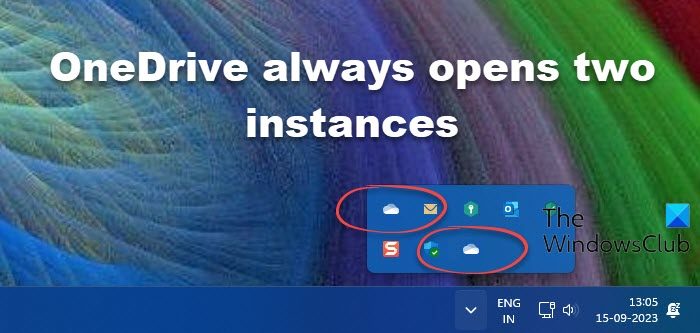
While one of these instances functions normally (it syncs files as expected), the other remains inactive but keeps opening for the user. These duplicate OneDrive folder icons appear in Explorer and in the System Tray area.
Why is OneDrive showing up twice?
OneDrive might be showing up twice due to app configuration settings. When you use your Microsoft account to sign in to Windows, it automatically creates a personal OneDrive account to back up your files (OneDrive comes bundled with Windows 11/10). Further, when you install Office 365/ Microsoft 365 and log in using your employer credentials, Windows creates another OneDrive for work or school account for you. The personal and work or school accounts can be identified by their colors. The personal OneDrive account icon appears in white color, while the work or school OneDrive account icon appears in blue color on a Windows PC.
Apart from the above, incorrect registry entries can also be blamed for duplicate OneDrive icons.
OneDrive always opes two instances
Before you begin troubleshooting, make sure the instances are not ‘quick-access shortcuts’ in File Explorer (for example, you may see the same OneDrive instance under your User Name folder and under the Desktop folder). If this is the case, you can delete such shortcuts from their destination folder (such as the Desktop) to remove the duplicates from the File Explorer navigation pane.
If the icons are not shortcuts and OneDrive is consistently opening two instances on your Windows 11/10 PC, use the following solutions to fix the issue:
- Update Windows.
- Reset OneDrive.
- Uninstall OneDrive, remove OneDrive cached credentials, and reinstall OneDrive.
- Modify the Registry settings for duplicate account.
Let us see these in detail.
1] Update Windows
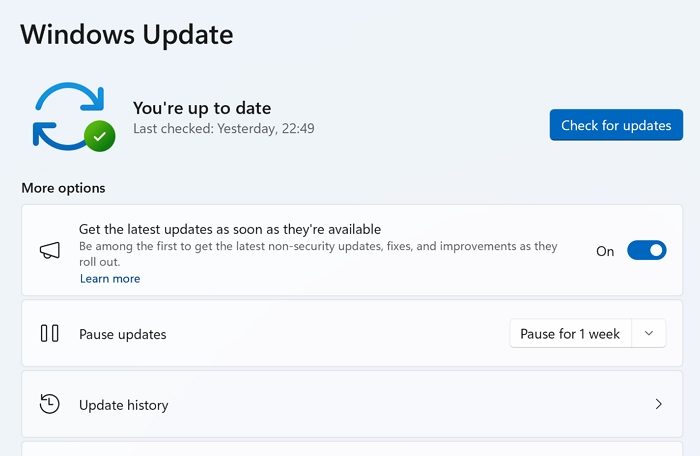
Keeping the OS up-to-date helps in keeping various software-related issues.
Go to the Windows Update section and see if you have any pending updates. If yes, download and install all of them. Now restart your PC and see if the issue is resolved.
2] Reset OneDrive
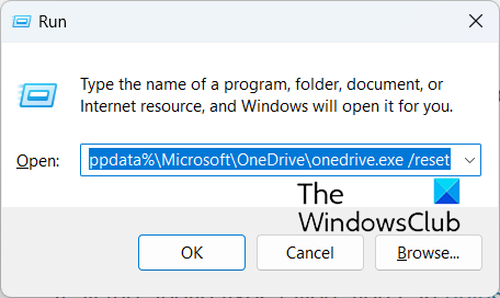
Another useful fix is resetting the OneDrive desktop client. Resetting OneDrive will disconnect all existing sync connections (including your personal OneDrive and OneDrive for work or school) and rebuild the DAT file after a system restart.
To reset OneDrive, quit the app from the system tray icon (right-click> Pause syncing > Quit OneDrive). Then press Win+R and execute the following command in the Run dialogue box:
%localappdata%\Microsoft\OneDrive\onedrive.exe /reset
Restart OneDrive and see if it stops duplicating the icon.
3] Uninstall OneDrive, remove OneDrive cached credentials, reinstall OneDrive
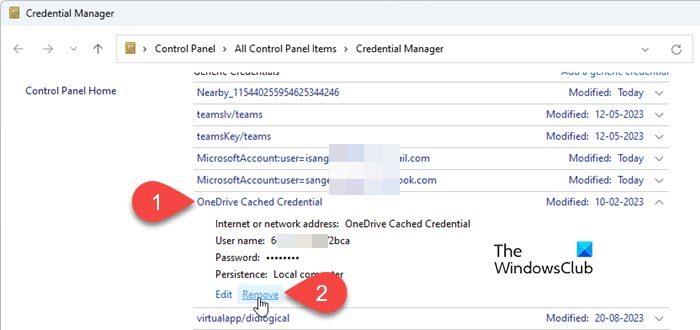
Next, uninstall OneDrive and manually reinstall its latest version. Before reinstalling the app, remove OneDrive cached credentials to prevent the new OneDrive installation from automatically logging in to your account and start syncing your files.
Type ‘credential’ in the Windows Search bar and select the Credential Manager app. Switch to Windows Credentials under Manage your credentials. Navigate to Generic Credentials. Click on the down arrow next to OneDrive Cached Credentials. Click on the Remove link at the bottom of the cached credentials.
Restart your PC. Launch OneDrive, finish the setup (using your work credentials), and see if the issue persists.
4] Modify the Registry settings for duplicate account
Press Win+R to open the Run dialogue box. Type ‘regedit‘ and press the Enter key. Click Yes in the User Account Control prompt.
A] Delete the duplicate key
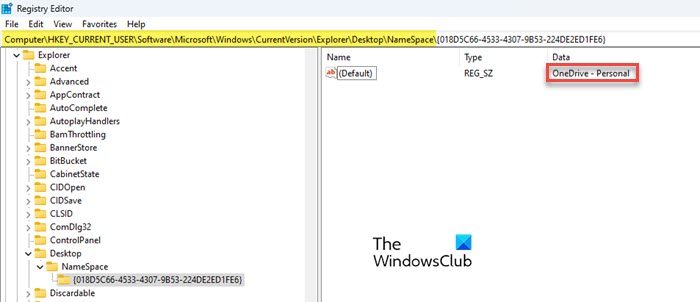
In the Registry Editor window, navigate to the following key:
Computer\HKEY_CURRENT_USER\Software\Microsoft\Windows\CurrentVersion\Explorer\Desktop\NameSpace
If you have several folders under the NameSpace key, select each folder, one by one, and check the value under the Data column in the right panel.
If you see two instances of OneDrive under the Data column (for example OneDrive – Personal and OneDrive – CompanyName), delete the registry key associated with the account you want to remove from the File Explorer (right-click on the folder with duplicate entry in the left panel and select Delete). If you see a confirmation pop-up, click on Yes to confirm your action.
Reboot your PC. Quit the OneDrive sync client, re-launch it, and set up syncing OneDrive for business. See if the duplicate folder still appears.
Note: Serious issues might occur if you modify the registry incorrectly. Make sure to carefully follow the above steps or take a backup of the registry for extra precaution.
B] Modify the duplicate key
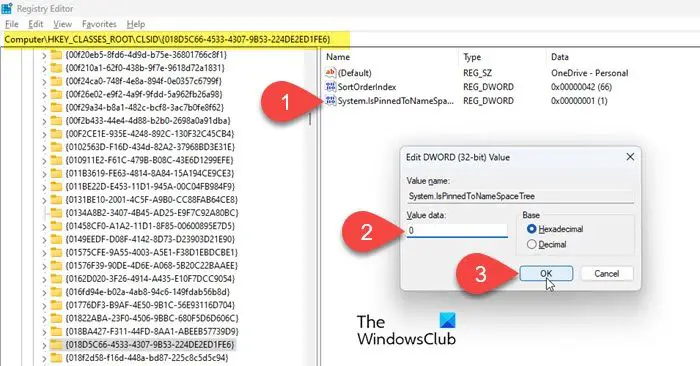
Instead of deleting the above key, you can also modify a related setting to remove duplicate OneDrive icons from File Explorer.
Navigate to the following key in the Registry Editor window:
Computer\HKEY_CLASSES_ROOT\CLSID
Click on the Edit menu and select Find (alternatively, press Ctrl+F).
In the Find dialogue box, enter OneDrive in the Find what: field. Uncheck the ‘Keys’, ‘Values’, and ‘Match whole string only’ options (keep only the Data option checked) and click on the Find Next button. Key with ‘OneDrive’ under the Data column in the right panel will be highlighted.
Keep pressing f3 or fn+f3 (depending on your keyboard) until you find the OneDrive instance you want to remove.
Once you locate the correct key, double-click on the System.IsPinnedToNameSpaceTree DWORD. In the Edit DWORD dialogue box, set the Value data to 0. Click on the OK button to save changes to the registry.
Reboot your PC to apply the changes.
Also Read: OneDrive Shared folder not syncing or updating.
Note: The above DWORD tells Windows not to display OneDrive in the File Explorer navigation pane. If you pick the wrong entry, you can change the value data back to 1 to undo changes to the registry.
I hope the above solutions help you fix OneDrive and make it stop opening two separate instances on your Windows 11/10 PC.
Two instances of OneDrive folder in File Explorer
If you see two OneDrive folder icons in Explorer, then users who only use the business account can unlink their personal OneDrive account through Windows settings. However, after unlinking the account, one instance of OneDrive disappears from the system tray area, but two instances remain in the File Explorer navigation pane. The ‘ghost’ instance remains empty and inactive, but still opens and in some cases, redirects the user to the business account.
Read Next: How to unlink, exclude, or remove a folder from OneDrive.
Leave a Reply